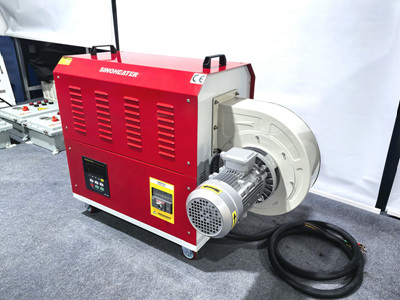Choosing a Heat Blower Based on Operational Ease: Key Factors for User-Friendly Performance
Selecting a heat blower with intuitive operation ensures efficiency, safety, and minimal downtime, especially in fast-paced or high-demand environments. From control interfaces to maintenance accessibility, the following factors help evaluate how user-friendly a device is for diverse applications.
Intuitive Control Interfaces and Adjustment Mechanisms
A heat blower’s controls should be straightforward to navigate, even for users with limited technical experience. Look for models with clearly labeled dials, buttons, or touchscreens that allow quick adjustments to temperature, airflow, and power settings. Digital interfaces with backlighting are advantageous in low-light conditions, such as construction sites or warehouses. Some designs incorporate ergonomic handles or remote controls, enabling operation from a distance—a critical feature for safety in hazardous zones. Avoid devices with overly complex menus or small, hard-to-read displays, as these can lead to errors or delays.
Quick Start-Up and Pre-Set Functionality
Time-sensitive tasks demand heat blowers that activate instantly without lengthy warm-up periods. Prioritize models with one-touch start buttons or automatic ignition systems for combustion-based units. Pre-set modes, such as “defrost” or “high-heat,” simplify operation by allowing users to select predefined settings tailored to common tasks. These features reduce the need for manual calibration and ensure consistent performance across repeated uses. Additionally, devices with memory functions that retain preferred settings after shutdown streamline workflows for recurring applications.
Accessibility for Routine Maintenance and Cleaning
Regular upkeep is essential for longevity, but cumbersome maintenance can discourage proper care. Choose heat blowers with tool-free access panels or removable filters that simplify cleaning and part replacement. Dust and debris accumulation in air intake vents or heating elements can impair performance, so designs with washable filters or self-cleaning mechanisms save time and effort. Clear instructional diagrams or QR codes linking to video tutorials on the device itself further enhance user convenience, especially for troubleshooting minor issues without external guidance.
Portability and Maneuverability Features
In environments requiring frequent repositioning, the heat blower’s weight and design play a significant role in operational ease. Lightweight models with integrated handles or wheels reduce physical strain during transport. Some units feature collapsible handles or stackable designs for compact storage in tight spaces. For industrial settings, forklift-compatible bases or mounting brackets enable easy integration into existing workflows. Assess whether the device’s size and shape allow it to navigate doorways, stairs, or uneven terrain without assistance.
Real-Time Monitoring and Feedback Systems
Advanced heat blowers include sensors or displays that provide instant feedback on operational status, such as temperature fluctuations, airflow rates, or filter conditions. Audible alarms or visual indicators for overheating, low fuel (for gas-powered models), or clogged filters alert users to issues before they escalate. This proactive approach minimizes downtime and prevents costly repairs. Some devices even sync with mobile apps via Bluetooth or Wi-Fi, allowing remote monitoring and adjustments—a boon for supervisors managing multiple units across a site.
Compatibility with Auxiliary Tools and Accessories
Flexibility in usage enhances operational convenience, especially for specialized tasks. Check if the heat blower supports attachments like ducting hoses for directed airflow, diffusers for even heating, or extension cords for extended reach. Adjustable nozzles or swivel brackets enable precise targeting of heat, reducing the need for manual repositioning. Devices compatible with standard accessories are more versatile and cost-effective over time, as users can adapt them to evolving needs without investing in entirely new systems.
By prioritizing these aspects, buyers can identify a heat blower that aligns with their team’s skill level and operational demands. Intuitive controls, low-maintenance designs, and portable features collectively ensure the device enhances productivity without requiring extensive training or effort.



